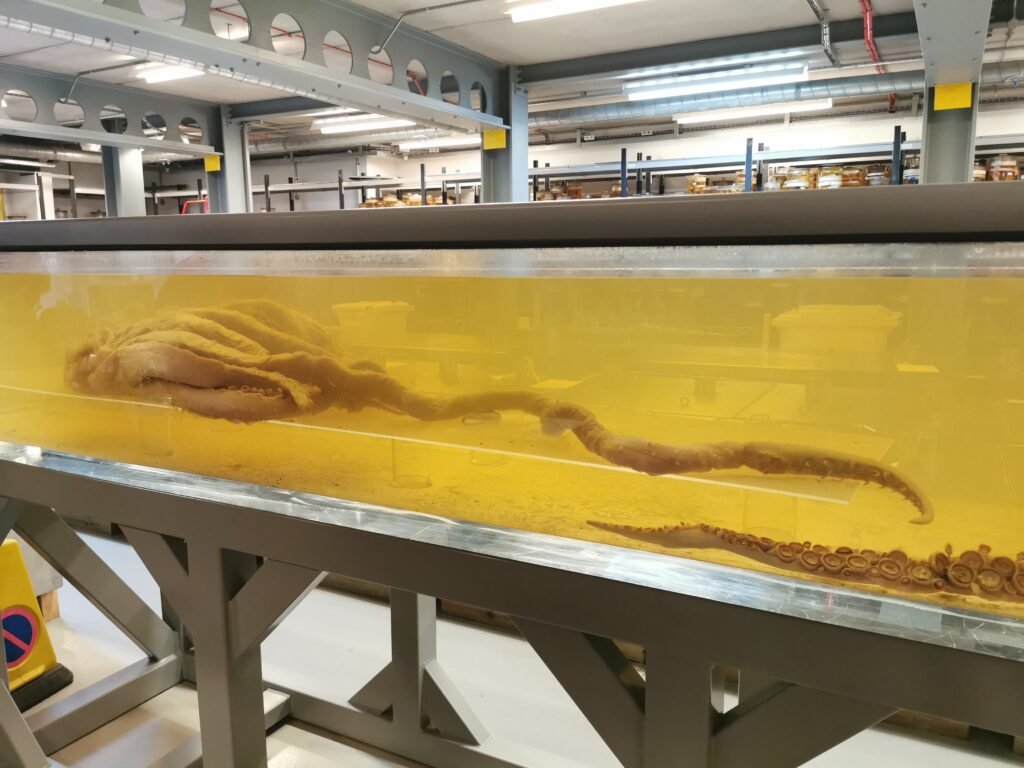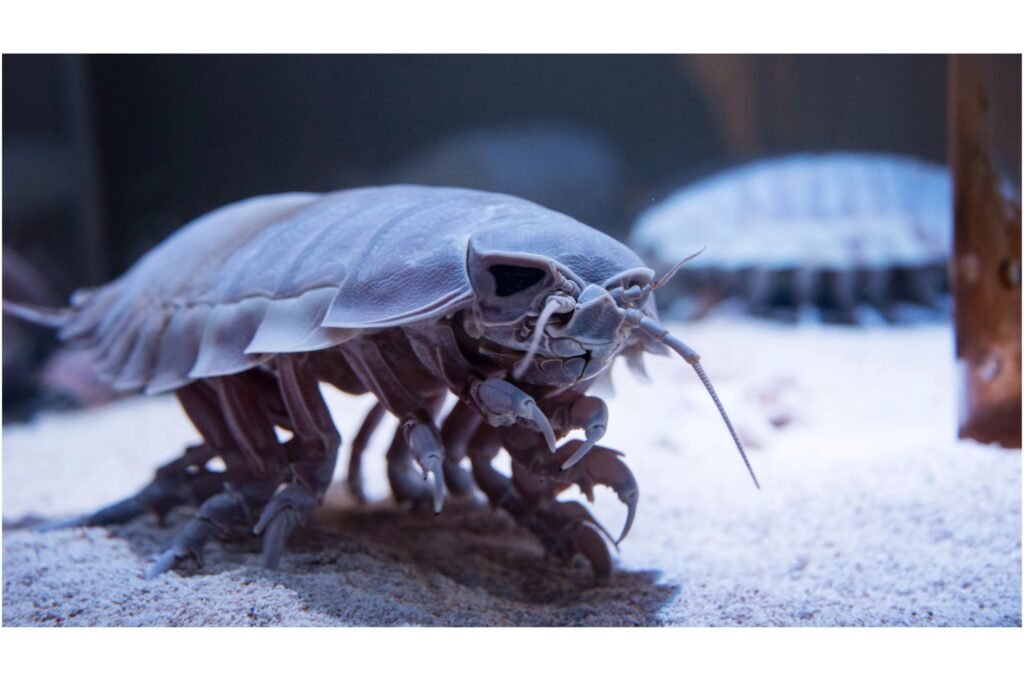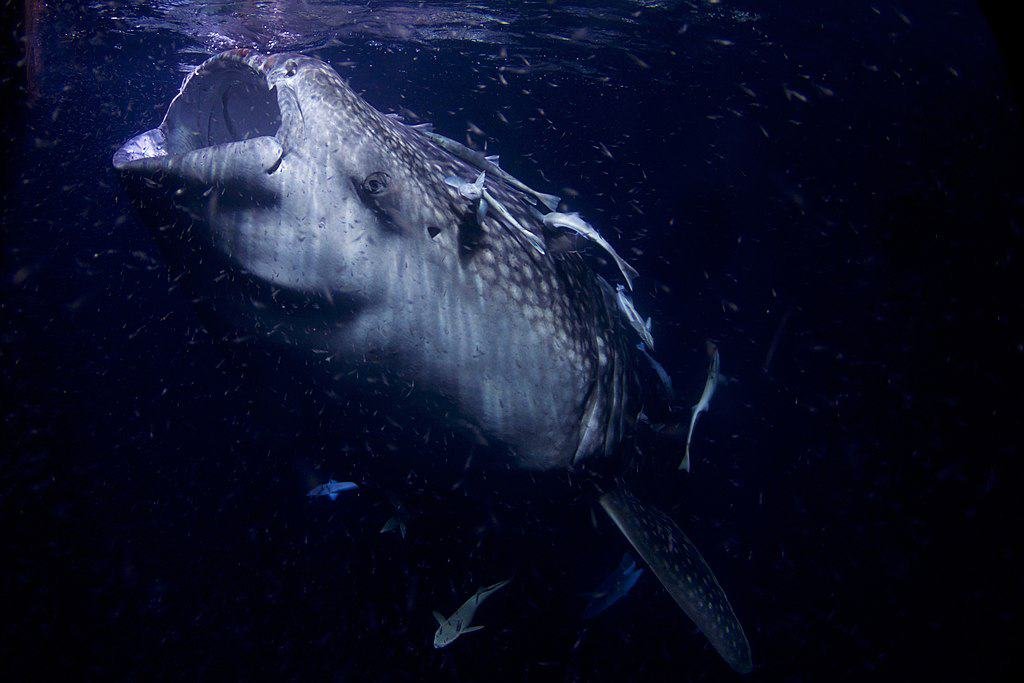The deep sea is one of Earth’s final frontiers, a realm of perpetual darkness and immense pressure where only the most extraordinary creatures thrive. The ocean depths hold an array of megafauna, some of which stretch our imaginations and redefine our understanding of life. This mysterious region is home to fascinating species that have adapted to their harsh environment in truly remarkable ways.
What is Megafauna?

Megafauna, typically referring to large animals, spans a variety of ecosystems, from savannas and forests to the lesser-known abyssal zones of our oceans. In the deep sea, megafauna includes organisms that have developed unique adaptations to survive in high-pressure, low-light conditions. These adaptations are crucial for enduring the abyss’s challenges, a region over 2,000 meters below the ocean’s surface.
The Giant Squid: Elusive Master of the Deep

The giant squid, one of the most iconic deep-sea creatures, has long captured human curiosity. Growing up to 13 meters (43 feet) in length, these giants boast massive eyes that help detect faint glows in the abyss, a vital adaptation for locating prey in near darkness. Despite their size, they remain shrouded in mystery, with live sightings still extremely rare.
Colossal Squid: Larger and Mysterious

The colossal squid surpasses even the giant squid in mass, featuring longer tentacles and a heavier body. It inhabits the cold waters of the Antarctic, where its unique adaptations, like rotating hooks on its limbs, make it a formidable predator. Only a few specimens of this elusive creature have been studied, leaving much to learn about its lifestyle and behavior.
Deep-Sea Anglerfish: Masters of Bioluminescence

The anglerfish is famous for its bioluminescent lure, a glowing appendage used to attract curious prey in the inky darkness. These bizarre-looking fish might be smaller compared to other deep-sea giants, but they are fascinating for their evolutionary adaptations that allow them to thrive in one of Earth’s most extreme environments.
Giant Isopod: An Underwater Titan

Resembling a massive, pale pill bug, the giant isopod is one of the most intriguing creatures of the deep-sea floor. Growing up to 50 centimeters (about 20 inches) in length, this crustacean scavenges the ocean bottom, using its strong, segmented shell for protection against predators. Its oversized gills help extract oxygen in the low-oxygen environment, an essential adaptation for survival.
Whale Shark: Gigantic yet Gentle

The whale shark, known as the largest fish in the world, occasionally ventures into deeper waters. Though not living exclusively in the abyss, their expansive range includes profound ocean depths where they feed on plankton and small fish. Their placid nature belies their immense size, as they glide through the water with a grace uncharacteristic of their bulk.
Nameless Wonders: The Unexplored Giants

The allure of the deep sea lies in its unexplored territories teeming with unknown giants. Ongoing exploration missions continue to discover species that stretch our imagination, proving that life can take astonishing forms even in the most unlikely places. The future holds many discoveries about these gargantuan creatures that await human eyes.
Conclusion

The deep-sea holds some of the planet’s most phenomenal megafauna, each with unique adaptations vital for survival under extreme conditions. From the giant and colossal squids to the bright lures of the anglerfish, these creatures tell stories of evolutionary marvels and inspire ongoing scientific inquiry. As we continue to explore the ocean’s depths, there’s no telling what other colossal wonders we might yet discover, forever changing our understanding of life on Earth.



